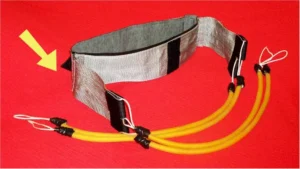94.80€
In Stock
Elastic traction bands are a tool developed to increase the performance of athletes through the resistance of the tires. With this equipment the athlete will develop initiation, strength and endurance.

The Actual® traction belt equipment allows the trainer to configure the belt in two ways.
The belt contains two elastic adapter tabs on its sides, instead of just one as on the Original Traction model. This is why the belt has two bases:
Each tab can hold up to 4 rubber bands, allowing for a final assembly with 8 rubber bands.


In the image on the left, the two side flaps have the ability to accept elastic bands. In this way the athlete's effort is shared on each side.
In the image to the right, only one tab is engaged, leaving the tires grouped together in a single package, just like a normal pull strap.
What also differentiates this belt from the single pull model is the length of the tires, which, being larger¹, provide a greater range of grip for exercises that require durable runs, in addition to the "design" of the belt with two fins.
Using Actual's individual traction belt is very easy! Simply adjust the pole adapter to the desired height (usually around the wearer's waist) and wrap the belt around your belly so it stays firmly in place.
This model can be used individually, where the belt is fixed to a static point by the pole adapters that come with the product, or in pairs, where one athlete controls the effort of the other.